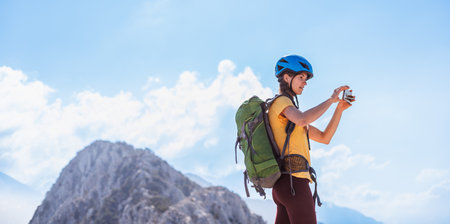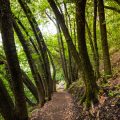1. Essential Tips for Planning Your Great Smoky Mountains Adventure
The Great Smoky Mountains National Park is a hiker’s paradise, but a little planning goes a long way. Here’s what you need to know before you hit the trails.
Best Time to Visit
The Smokies offer something unique in every season, but your experience can vary a lot depending on when you go. Check out this quick comparison:
| Season | What to Expect | Pros | Cons |
|---|---|---|---|
| Spring (Mar-May) | Wildflowers, cool temps, occasional rain | Fewer crowds, beautiful blooms | Muddy trails, unpredictable weather |
| Summer (Jun-Aug) | Warm, lush greenery, more visitors | Longer daylight, great swimming holes | Bugs, crowded popular spots |
| Fall (Sep-Nov) | Crisp air, stunning fall colors | Spectacular views, ideal hiking weather | Peak color draws big crowds in October |
| Winter (Dec-Feb) | Chilly temps, snow at higher elevations | Quiet trails, clear mountain views | Some roads/trails may close due to snow/ice |
Permits and Regulations
If you’re planning a simple day hike, you don’t need a permit. But if you want to stay overnight in the backcountry or use group campsites, you’ll need to get permits in advance. Here are the basics:
| Activity | Permit Needed? | How to Get It |
|---|---|---|
| Day Hiking | No | N/A |
| Backcountry Camping | Yes | Online reservation system |
| Group Camps/Shelters | Yes (for groups of 8+) | Online reservation system |
| Cades Cove Campground, etc. | Yes (car camping) | Recreation.gov reservations |
Must-Have Gear for the Smokies’ Changing Conditions
Packing Smart for All-Weather Adventures
The weather in the Smokies can change quickly—sunshine one minute, sudden downpour the next. Make sure your gear list includes these essentials:
- Waterproof Jacket or Poncho: Afternoon storms are common even in summer.
- Sturdy Hiking Boots: Trails can be rocky and muddy.
- Layered Clothing: Temps drop fast as you climb higher.
- Trekking Poles: Helpful for steep or slippery sections.
- Tons of Water & Snacks: Streams aren’t always safe to drink from without filtering.
- Sunscreen & Bug Spray: Even on cloudy days, UV rays and bugs are out in force.
- Pocket Map or GPS App: Cell service is spotty in many areas.
- Bare Minimum First Aid Kit: Just in case of minor scrapes or blisters.
- A Trash Bag: “Leave No Trace” is a must here—pack out everything!
Tried-and-True Local Tip:
If you’re planning on exploring some of the less-traveled backcountry trails, check current trail conditions at visitor centers or the park’s alerts page here. Weather and wildlife can temporarily close certain routes.
The Great Smoky Mountains reward prepared hikers with unforgettable views and experiences—so get your gear together and start planning that adventure!
2. Top Trails: Must-Hike Routes for Every Skill Level
If youre ready to hit the trails in Great Smoky Mountains National Park, youre in for a treat! Whether you’re new to hiking or a seasoned pro, there’s something here for everyone. From easy strolls perfect for families to challenging hikes that promise big rewards, let’s break down the must-hike routes and what you can expect.
Family-Friendly & Easy Hikes
| Trail Name | Distance (Round Trip) | Difficulty | Highlights | Trailhead Info |
|---|---|---|---|---|
| Laurel Falls Trail | 2.6 miles | Easy | Paved path, beautiful waterfall, kid-friendly | Located off Little River Road, parking can fill up fast—go early! |
| Cataract Falls Trail | 1 mile | Easy | Short walk, scenic creek views, shaded path | Begins behind Sugarlands Visitor Center; great for all ages |
| Clingmans Dome Observation Tower Trail | 1 mile | Easy/Moderate (steep but paved) | Highest point in the park, 360-degree views | Clingmans Dome Road (closed in winter); restrooms at trailhead |
Moderate Trails for Adventure Seekers
| Trail Name | Distance (Round Trip) | Difficulty | Highlights | Trailhead Info |
|---|---|---|---|---|
| Abrams Falls Trail | 5 miles | Moderate | Lush forests, powerful waterfall, wildlife spotting possible | Cades Cove area; early arrival recommended on weekends and in summer |
| Alum Cave Trail to Alum Cave Bluffs | 4.6 miles | Moderate/Strenuous (some steep sections) | Dramatic bluffs, great vistas, unique geology | Tennessee Route 71/Newfound Gap Road; limited parking at trailhead—carpool if possible! |
| Grotto Falls Trail (Trillium Gap) | 2.6 miles | Moderate | Walk behind a waterfall! Wildflowers in spring and summer. | Roaring Fork Motor Nature Trail; road is one-way and seasonal—check before you go. |
Difficult Treks for Experienced Hikers
| Trail Name | Distance (Round Trip) | Difficulty | Highlights | Trailhead Info |
|---|---|---|---|---|
| Boulevard Trail to Mount LeConte | 16 miles | Difficult | Breathtaking ridge walks, panoramic Smoky Mountain views, lodge at summit (reservations required for overnight stay) | Takes off from Newfound Gap parking area; start early and bring plenty of water/snacks! |
| Baskins Creek Falls Trail | 3 miles | Difficult (steep descent/ascent) | Tucked-away waterfall, less crowded than others | Baskins Creek Trailhead on Roaring Fork Motor Nature Trail; seasonal access only. |
Insider Tips for Hiking These Trails
- Packing: Even easy hikes can feel longer with kids—bring snacks, water, sunscreen, and bug spray.
- Crowds: Popular trails like Laurel Falls and Clingmans Dome get busy by mid-morning. Early birds get the best parking and peaceful trails.
- Shoes: Wear sturdy shoes or boots—even short walks can be slippery after rain.
- Bears: Bear sightings are common! Keep your distance and don’t leave food unattended.
Your Next Steps: Plan Your Adventure!
No matter your skill level, there’s a trail waiting for you in the Smokies. Use this guide to pick your next adventure and soak up the natural beauty that makes this park so special. Happy hiking!

3. Wildlife & Nature: Respecting the Smokies’ Unique Ecosystem
Discovering Native Flora and Fauna
The Great Smoky Mountains National Park is famous for its incredible biodiversity. It’s home to over 1,500 kinds of flowering plants, more than 200 species of birds, around 65 types of mammals, and countless insects and reptiles. While hiking, you might spot wildflowers like mountain laurel in spring or catch glimpses of white-tailed deer, salamanders, and—if youre lucky—black bears.
| Common Wildlife | Where You Might See Them |
|---|---|
| Black Bears | Forested areas, Cades Cove, Roaring Fork Motor Nature Trail |
| White-tailed Deer | Cades Cove, open meadows, trails at dawn/dusk |
| Wild Turkeys | Fields and along quieter trails |
| Synchronous Fireflies (summer) | Elkmont area during late May to early June evenings |
Tips for Safe Wildlife Encounters (Especially Black Bears)
- Keep your distance: Stay at least 50 yards (about half a football field) away from bears and other large animals.
- Never feed wildlife: Feeding animals is illegal and dangerous—it can make them aggressive toward people.
- Store food properly: Use bear-proof storage containers or hang your food at least 10 feet high and 4 feet from tree trunks when camping.
- If you see a bear: Stay calm. Don’t run. Back away slowly while facing the bear. Make yourself look big and make noise if the bear approaches.
- Report aggressive wildlife: Tell a park ranger about any unusual or aggressive animal behavior.
Leave No Trace Principles: Protecting the Park for All
The Smokies are loved by millions each year. To keep them beautiful and healthy, follow these Leave No Trace principles:
- Plan ahead and prepare: Know park rules, weather conditions, and bring essentials.
- Travel and camp on durable surfaces: Stick to established trails and campsites.
- Dispose of waste properly: Pack out all trash, leftover food, and toilet paper.
- Leave what you find: Don’t pick flowers or disturb wildlife habitats.
- Minimize campfire impact: Use a camp stove or only use designated fire rings; never leave fires unattended.
- Respect wildlife: Observe from a distance; don’t try to touch or feed animals.
- Be considerate of others: Yield the trail, keep noise down, and give everyone space to enjoy nature.
How You Can Help Preserve the Smokies’ Natural Beauty
- Volunteer: Join a park clean-up day or help maintain trails with local organizations like Friends of the Smokies.
- Support the park: Donate to conservation groups that fund education and restoration projects in the park.
- Stay informed: Check for updates on trail conditions and wildlife alerts before your trip at the official Great Smoky Mountains National Park website.
- Share responsibly: Inspire others by sharing your adventures on social media—but remind friends to respect park rules too!
4. Local Culture and Appalachian Heritage
Hiking in the Great Smoky Mountains National Park isn’t just about breathtaking views and scenic trails—it’s also a journey into the heart of Appalachian culture. The Smokies are steeped in rich traditions, from old-time mountain music to historic homesteads that tell stories of early settlers. Here’s how you can experience the unique heritage of this incredible region while out on the trail.
Historic Homesteads and Settlements
The park is dotted with preserved cabins, barns, and churches that give a glimpse into Appalachian life from the 1800s and early 1900s. Walking through these sites, you’ll see hand-hewn logs and stone chimneys that show off the craftsmanship of the early mountaineers.
| Historic Site | Location | What You’ll See |
|---|---|---|
| Cades Cove | West side of the park | Restored cabins, churches, grist mill, wildlife viewing |
| Roaring Fork Motor Nature Trail | Near Gatlinburg | Noah “Bud” Ogle Cabin, farm buildings, wildflowers in spring |
| Cataloochee Valley | Northeast section | Old schoolhouse, churches, elk herds |
Mountain Music and Storytelling
The Smokies are famous for their traditional bluegrass, gospel, and folk music. If you’re hiking during festival season or visiting gateway towns like Gatlinburg or Townsend, you might catch a live performance featuring banjo, fiddle, and storytelling—a tradition passed down through generations.
Where to Experience Appalachian Music:
- Cades Cove Visitor Center: Occasional demonstrations by local musicians.
- Great Smoky Mountains Heritage Center (Townsend): Regular concerts and cultural events.
- Pigeon Forge & Gatlinburg: Live music at restaurants and community events.
The Deep-Rooted History of the Appalachians
The park was once home to hundreds of families who lived off the land. Many trails follow old roads and paths used by these settlers. Interpretive signs along popular routes like the Alum Cave Trail or Kephart Prong Trail share stories about logging camps, farming, and Cherokee heritage in the area.
Tips for Immersing Yourself in Smoky Mountain Heritage:
- Take a guided history hike: Rangers often lead walks focused on local culture—check the park schedule for details.
- Visit historic churches on Sundays: Some still hold seasonal services open to visitors.
- Support local artisans: Stop by craft shops in nearby towns for handmade quilts, pottery, and woodwork inspired by Smoky Mountain traditions.
Dive into the living history of the Great Smoky Mountains as you hike—every step is a chance to connect with Appalachian roots that make this national park truly one-of-a-kind.
5. Where to Stay and Refuel: Accommodations, Camping, and Local Eats
After a long day exploring the scenic trails of Great Smoky Mountains National Park, you’ll want the perfect spot to kick back or fuel up for your next adventure. Whether you’re into rustic camping under the stars, cozying up in a mountain cabin, or sampling some down-home Southern cooking, there’s something for everyone near the park’s gateway towns like Gatlinburg and Townsend.
Best Campgrounds in and Around the Smokies
The national park is home to several popular campgrounds that put you right in nature. Here are a few top picks:
| Campground | Location | Amenities | Pro Tips |
|---|---|---|---|
| Elkmont Campground | Inside GSMNP, near Gatlinburg | Tent/RV sites, restrooms, water | Book early; great for wildflowers in spring |
| Cades Cove Campground | West side of the park | Tent/RV sites, showers nearby, camp store | Bike rentals available; awesome wildlife viewing |
| Abram’s Creek Campground | Near Townsend (quiet side) | Tent sites only, limited facilities | Peaceful escape from crowds; good for solitude seekers |
| Cosby Campground | Northeast part of the park | Tent/RV sites, hiking trail access | Less busy even during peak season |
Cozy Cabins and Lodges for All Seasons
If you prefer a soft bed after hiking, check out these classic Smoky Mountain stays:
- Gatlinburg Cabins: From rustic log cabins with fireplaces to modern lodges with hot tubs and mountain views—perfect for families or couples.
- Townsend Cottages: Known as the “peaceful side,” Townsend offers charming cottages nestled along rivers or tucked into wooded hillsides.
- Historic Inns: The Tremont Lodge & Resort and Dancing Bear Lodge both provide a blend of comfort and Appalachian character.
Taste of the Smokies: Can’t-Miss Diners, Breweries & Cafés
No trip is complete without sampling local flavors. Southern hospitality shines at these must-try spots:
| Name | Location | What to Try | Why Locals Love It |
|---|---|---|---|
| Pancake Pantry | Gatlinburg | Sugar ‘n’ Spice pancakes, country ham breakfast plate | A morning tradition for hikers since 1960! |
| The Apple Barn Cider Mill & Restaurant | Pigeon Forge (near Gatlinburg) | Cider glazed chicken, fried apple pies, fresh cider donuts | Loved for homestyle meals and friendly vibes. |
| The Dancing Bear Appalachian Bistro | Townsend | Braised short ribs, cornmeal-crusted trout, craft cocktails | Date night favorite with farm-to-table flair. |
| Smoky Mountain Brewery & Restaurant | Gatlinburg & Pigeon Forge locations | Cherokee Red Ale, wood-fired pizzas, burgers | Casual hangout after a hike; local beer on tap. |
Local Tips for Your Stay and Refueling Stops
- Book early: Especially in summer and fall when leaf-peeping is big!
- Mingle with locals: Hit up diners or breweries for trail tips and hidden gems.
- Pack layers: Mountain weather can change fast—even if you’re just walking to dinner!
Your Adventure Awaits!
No matter how you choose to stay or refuel near Great Smoky Mountains National Park, you’ll find plenty of options that add comfort—and true Southern charm—to your hiking experience.

